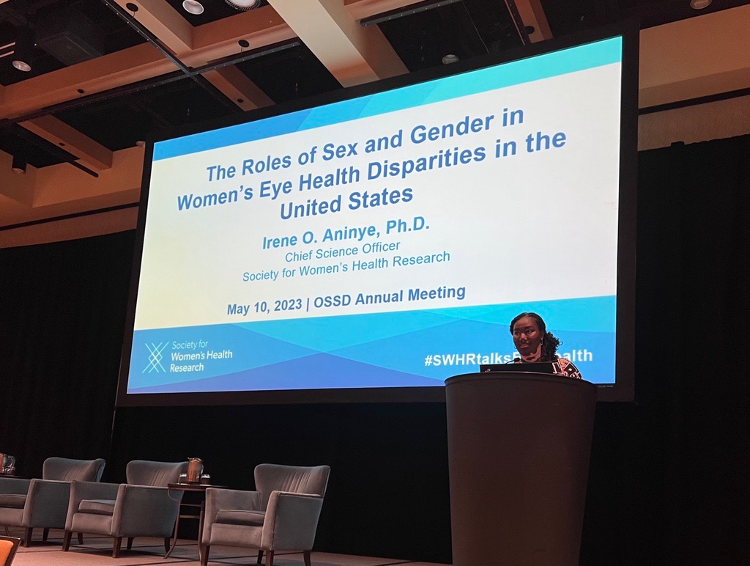By Gabriella Watson, MS, Science Programs Coordinator
Vision plays a fundamental role in our daily lives – from reading and writing, to driving, watching TV, and connecting with those around us. However, people often forget the importance of eye health until symptoms arise or vision problems become too pronounced to ignore. Data from a nationwide survey about public attitudes towards eye health found that 25% of respondents were not aware of major eye diseases, yet a majority agreed that good eye health is important to overall health, and almost half of respondents rated losing vision as one of the worst possible health outcomes.
Approximately 12 million Americans ages 40 and older are visually impaired or blind – more than half are women – and this number is expected to double by the year 2050, due to increases in life expectancy, diabetes, and other chronic diseases. Women are disproportionately affected by certain eye diseases, such as age-related macular degeneration, glaucoma, and cataracts. Life stages (e.g., pregnancy), health conditions (e.g., autoimmune disease, diabetes), and gender inequities (e.g., family planning, caregiving responsibilities) also contribute to the disparities that women experience in eye disease.
Historically, sex and gender differences in eye health and disease have been understudied and data is severely lacking. To bring attention to this growing public health issue, the Society for Women’s Health Research (SWHR) convened an Eye Health Working Group in 2020 comprised of twelve researchers, clinicians, and patient advocates for a series of roundtable discussions. The Working Group published an article entitled: The roles of sex and gender in women’s eye health disparities in the United States in the Biology of Sex Differences journal highlighting ways to advance research, improve patient care, and increase awareness of key issues.
Earlier this month, Irene O. Aninye, PhD, Chief Science Officer at SWHR, presented about this work during the “Hot Topics from Biology of Sex Differences” session at the Organization for the Study of Sex Differences (OSSD) 2023 Annual Meeting in Calgary, Alberta, Canada.
During the conference, researchers, scientists, and clinicians alike discussed the importance of integrating sex and gender differences into research, and spotlighted the great strides being made in our understanding of how an array of variables – particularly, sex, gender identity, race, and ethnicity – intersect to influence cardiovascular disease, eye health, COVID-19, cognitive disorders, and mental health disorders, to name a few.
Dr. Aninye used her session to encourage attendees to recognize and address the unique needs of women in eye health, which are often overlooked in the public health landscape. Dr. Aninye highlighted priority areas for women’s eye health research, care, and education, as outlined in the original paper, and left attendees with a call to action: “In order to address gaps in women’s eye health, we need to expand the current research framework, improve access to diagnostics and treatment via telehealth and community-based initiatives, increase public awareness, and foster interdisciplinary collaborations.”
Following the presentation, several attendees voiced their surprise to learn of the myriad issues affecting women’s eye health, further emphasizing the need for awareness among both public and scientific audiences. In addition to white papers and reports, SWHR has also created resources, such as the Patient Toolkit: A Guide to Women’s Eye Health and A Look Women’s Eye Health fact sheet, which serve to educate and empower individuals navigating their eye health and care as they age.
SWHR’s ongoing work in the eye health space aims to engage patients, clinicians, researchers, caregivers, and other health care decision-makers in discussions about the burden of vision care and eye diseases in women and promote science-based health care policies to improve patient outcomes.
